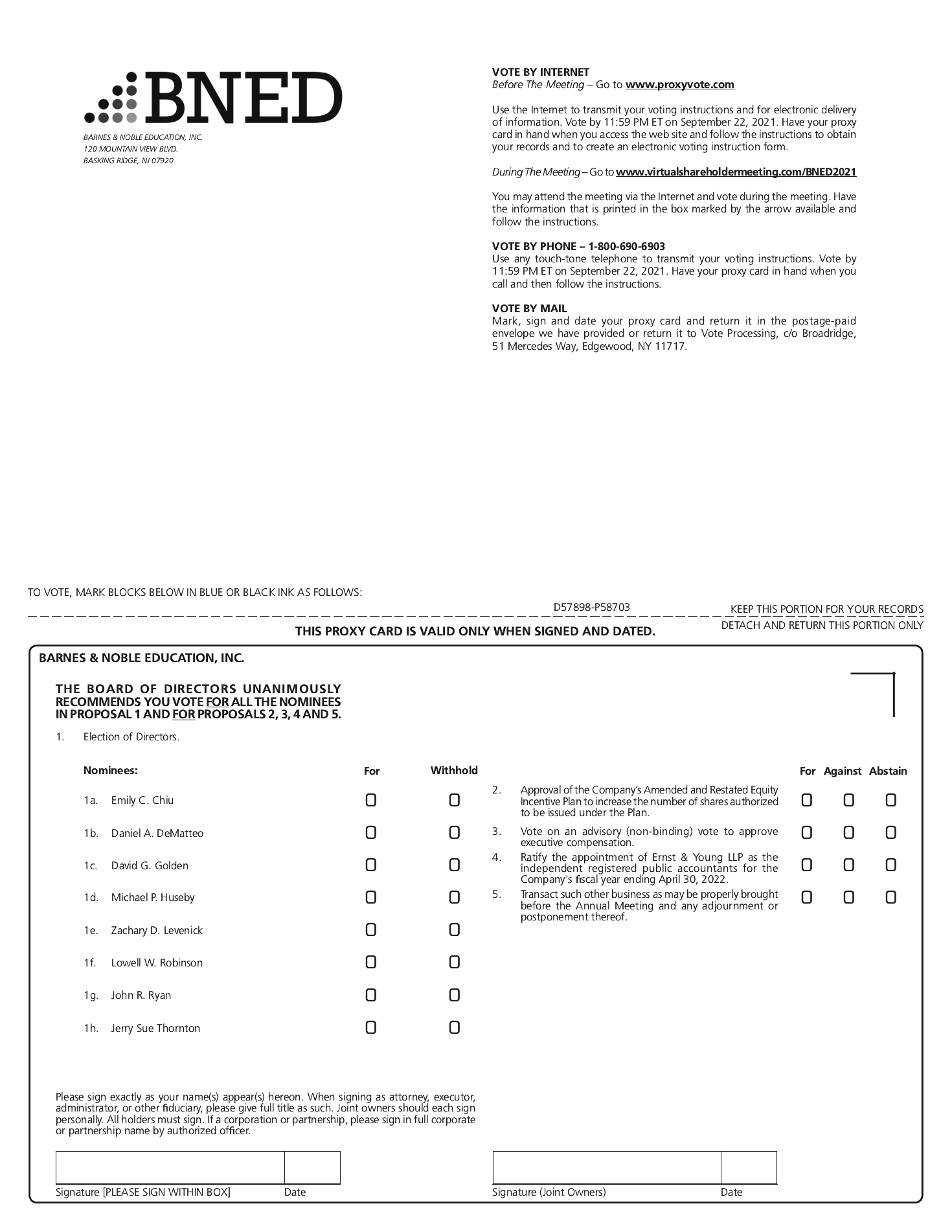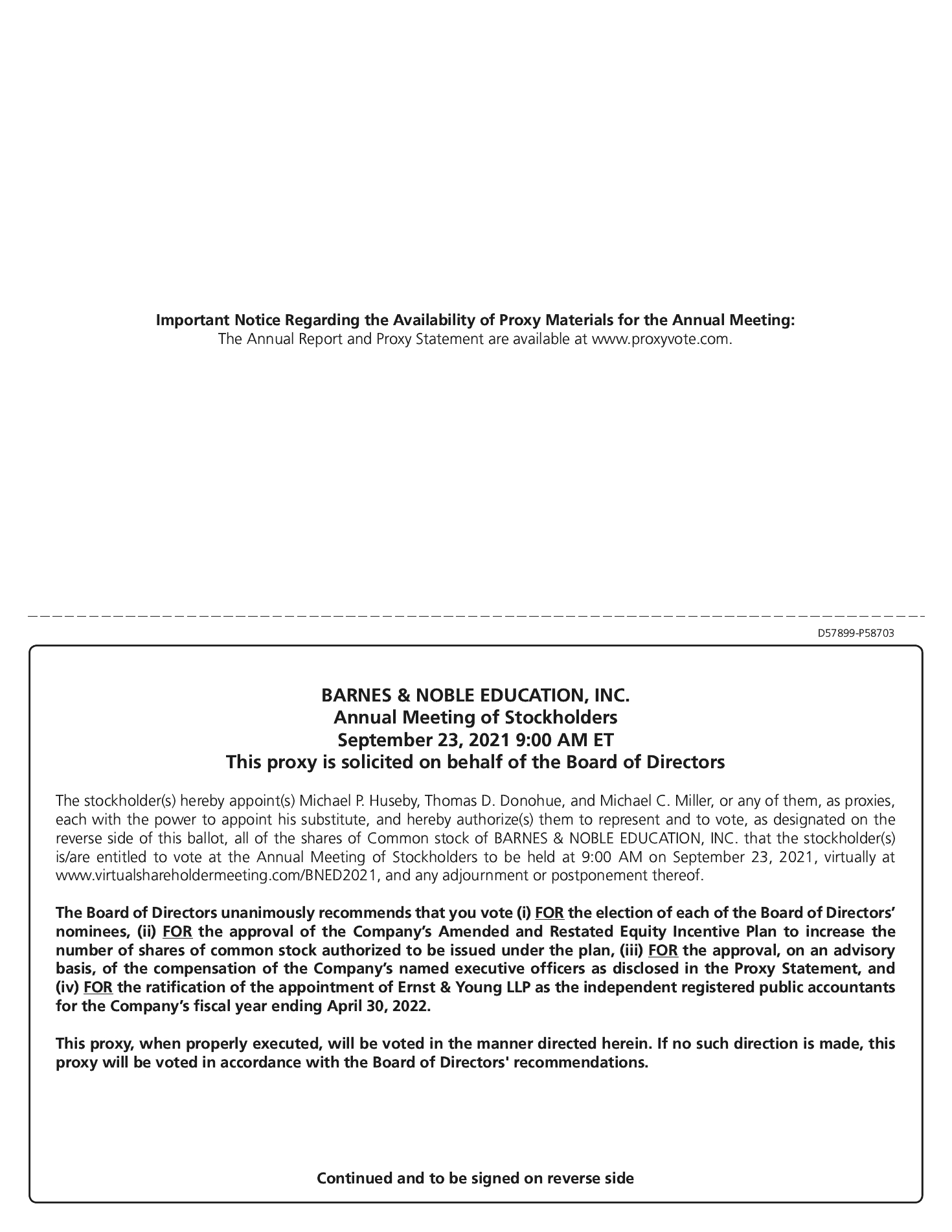Employment Arrangements-General Provisions
Pursuant to their employment agreement or letters, the annual base salaries of Messrs. Huseby, Donohue, Miller, Henderson and Shar can be no less than $1,100,000, $500,000, and $500,000, respectively, during the terms of their employment. Each of Messrs. Huseby, Donohue, Miller, Henderson and Shar are eligible for a minimum target annual incentive compensation award of not less than 150%, 85%, 85% and 85%, and 75%, respectively, of his base salary, as determined by the Compensation Committee. On April 1, 2020, as a result of the unusual circumstances surrounding the COVID-19 pandemic, Mr. Huseby voluntarily agreed to a temporary reduction of his base salary of 25%, effective April 13, 2020, which continued through September 19, 2020. On September 23, 2020, the Board and Mr. Huseby agreed to amend Mr. Huseby’s employment agreement to (i) extend the term of the agreement to September 19, 2022; (ii) reduce Mr. Huseby’s annual target bonus from 150% to 125% of his base salary; and (iii) use Mr. Huseby’s annual target bonus (rather than average annual bonuses for prior years) where applicable for purposes of calculating severance amounts, which treatment is consistent with the employment agreements with the Company’s other executive officers.
The employment agreements or employment letters also provide that the NEO is eligible for grants of equity-based awards under the Barnes & Noble Education, Inc. Equity Incentive Plan. With respect to Messrs. Donohue, Miller, Henderson and Shar the amounts of such grants are determined by the Compensation Committee, and with respect to Mr. Huseby, the amount of such equity award shall have an aggregate target value of 300% of his base salary. The employment agreement for Mr. Huseby also provides for $1,000,000 of life insurance and long-term disability (providing for monthly payments of $12,800) payable during the disability period through the earlier of death or the attainment of age 65. Each of our NEOs is entitled to all other benefits afforded to executive officers and employees of the Company.
Under their respective employment agreements or employment letters with the Company, our NEOs are subject to certain restrictive covenants regarding competition, solicitation, confidentiality and disparagement. Mr. Huseby’s agreement contains non-competition and non-solicitation covenants that apply during the employment term and for the two-year period following the termination of employment.
Messrs. Donohue, Miller and Henderson are restricted by a non-competition and non-solicitation covenant during their term of employment and for a one-year period thereafter. The confidentiality and non-disparagement covenants apply during the term of each respective employment letters of each NEO and at all times thereafter.
Employment Arrangements-Severance and Change of Control Benefits
Mr. Huseby’s employment agreement provides that he may be terminated by the Company upon death or disability or for “cause”, and by Mr. Huseby without “good reason”. If Mr. Huseby’s employment is terminated by the Company upon death, disability or for “cause,” or by the NEO without “good reason”, Mr. Huseby is entitled to payment of base salary through the date of death, disability or termination of employment.
If the employment of Messrs. Huseby, Donohue, Miller, Henderson or Shar is terminated by the Company without “cause” or by the NEO for “good reason,” the NEO is entitled, provided he signs a release of claims against the Company, to a lump-sum severance payment equal to one-time (or, in the case of Mr. Huseby, two times) (a) annual base salary; (b) the target annual incentive compensation for the fiscal year in which termination takes place; and (c) the cost of benefits.
Further, if the employment of any NEO is terminated by the Company without “cause” or by the NEO for “good reason” within two years (or the remainder of his term of employment under his employment agreement, whichever is longer) following a “change of control” of the Company, the NEO is entitled, regardless of whether he signs a release of claims against the Company, to a lump-sum severance payment equal to two times (or, in the case of Mr. Huseby, three times) (a) annual base salary; (b) the target annual incentive compensation for the fiscal year in which termination takes place; and (c) the cost of benefits. However, if such severance payments trigger the “golden parachute” excise tax under Sections 280G and 4999 of the Code, the severance benefits for an NEO would be reduced if such reduction would result in a greater after-tax benefit to him.
Except as otherwise provided by the applicable award agreement, if the successor company assumes or substitutes for an outstanding equity award, such award will continue in accordance with its applicable terms and will not be accelerated. Under the restricted stock unit award agreements, if the holder were terminated other than for “cause” at any time following a change of control, then the unvested restricted stock units underlying the award would immediately vest.








